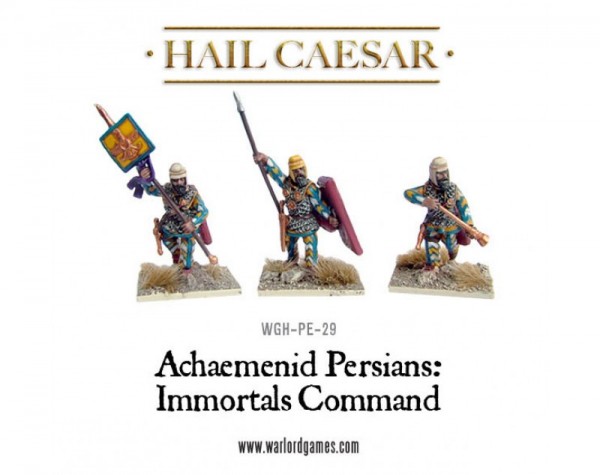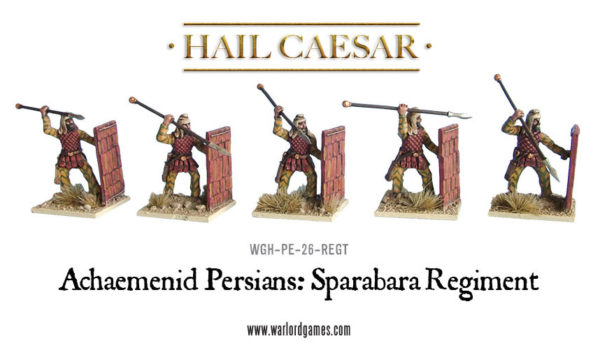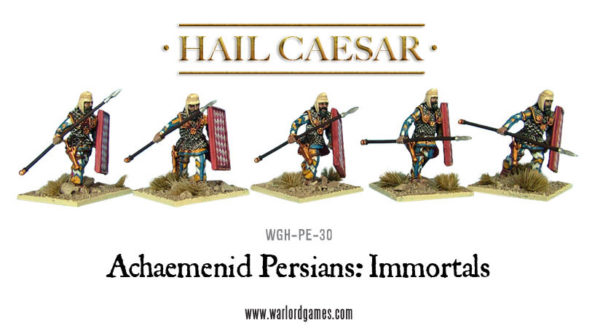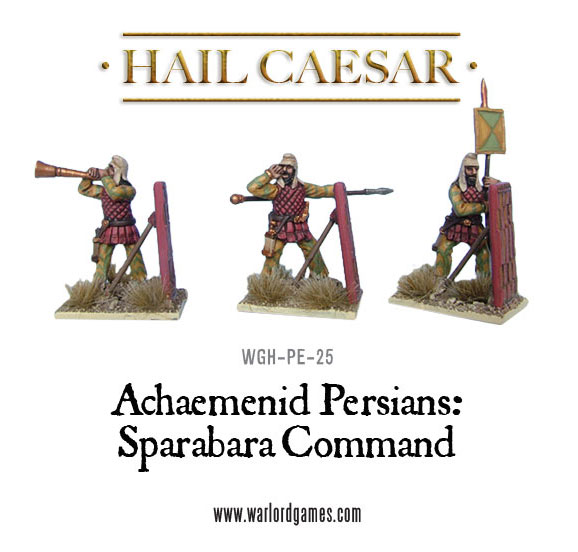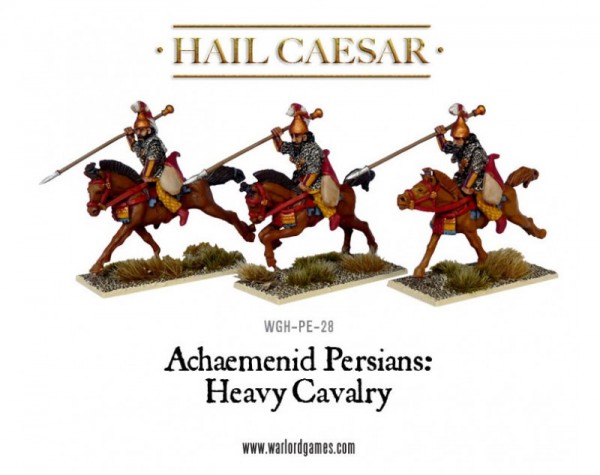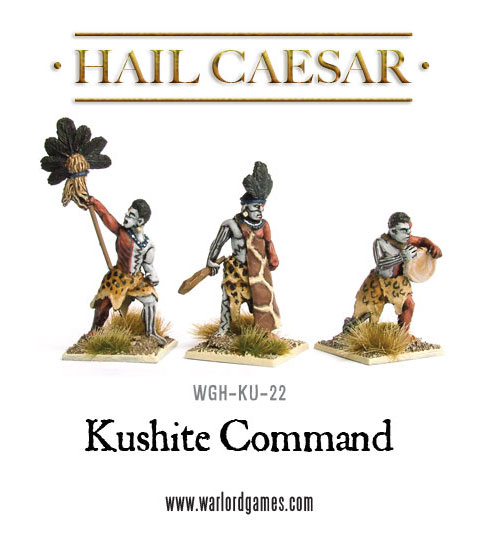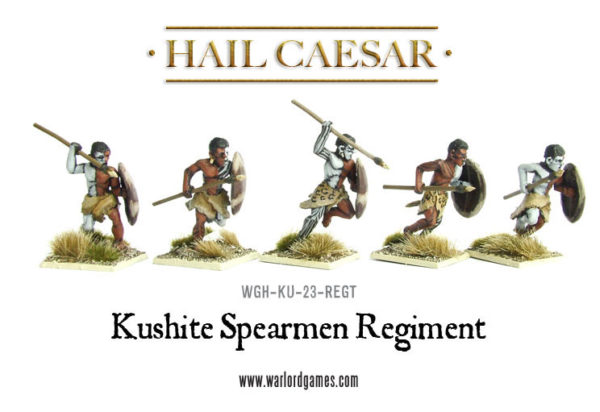Following on from his look at the Assyrian and Babylonian Empires last week, Vince Rospond now turns his attentions to the history of the Persian Achaemenid Dynasty.
Organisation
The Persian Empire was the successor of the Assyrian and Babylonian Empires in the mid-east. It inherited the bureaucracy of the government and copied some of the military organization in order to administer those lands. The King of Kings ruled with absolute authority, but recognized an obligation as father to the nation. To assist in ruling the lands were provincial governors, called Satrap,s who were responsible to the King. Where possible, diplomacy and bribes were used to resolve problems or conquer territory, but if force was needed the resources of the nation were mobilised and woe to those who were defeated…
Within the nation there were multiple cultures, each fielding forces in their own traditional units. These forces were supposedly fielded with a standard organisation. Men were organised into units of 5, 10, 50, 100, 1,000 (the equivalent of a regiment) and 10,000 – considered a division.
A division of 10,000 was known as a Baivarabam was commanded by a Baivarapatis. Regiments were called Hazarabam and they were commanded by a Hazarapatis. Companies were 100 men units known as Satabam, commanded by a Satapatis. Over the period the strength of a Satabam would fluctuate and at times fell to 40-50 men. Each 10 men were a section led by a Dathaba and assisted by a Paseadathapatis.
Equipment
Immortals were 10,000 strong and had silver apples adorning their spear butts. The personal guard of the King numbered 1,000 and had golden apples as spear butts. Archaemenid robes were also known as Elamite robes. During the reign of Darius I, the Achaemenid robe was discarded in favor of Median tunic, trousers and cloak.
Herodotus says that Persian soldiers wore soft felt caps or a tiara of loose cloth hoods. The outfit consisted of an embroidered sleeved tunic with iron scales and trousers. In some cases it seems the corset or cuirass was worn over a striped jacket and trousers. While Herodotus says Persian troops had strong scale cuirasses, it does not seem to be as strong as the hoplite’s bronze panoply. The cavalry was equipped like the infantry, but some had metal helmets. A bronze-pointed helmet worn by a Persian has been found at the site of the battle of Marathon.
The Persian soldier was supposedly equipped with wicker shields, short spears, bow with quiver and a dagger which hung at the right thigh. The wicker shield is sometimes depicted as rectangular and sometimes as a style called dipylon – oval with the sides cut out and a metal boss. The cavalry of Darius II in 422 BC lists an iron cuirass, helmet with felt neck guard, shield with an iron boss, bows and quiver, and iron club and two javelins.
The Sparabara shield men used large wicker shield much like a pavise. These seem to be borrowed from the Assyrians, who the Medes conquered and used large standing shields to protect massed archers. Likewise, the initial Persian armies were archer-based units used primarily to control cities.
Other troops were equipped in their national style. Sagartias horsemen numbered about 8,000 and used lassos. Scythian horsemen wore trousers with re-enforced metal pieces and boots. The jacket was white felt with fur with a blue felt hat. Scythian infantry had brass scale armour with bronze helmets. Assyrian spearmen wore traditional linen garments. According to Herodotus there was 30 different corps within the Empire. Five corps were equipped as core Persian troops – the rest essentially were light troops.
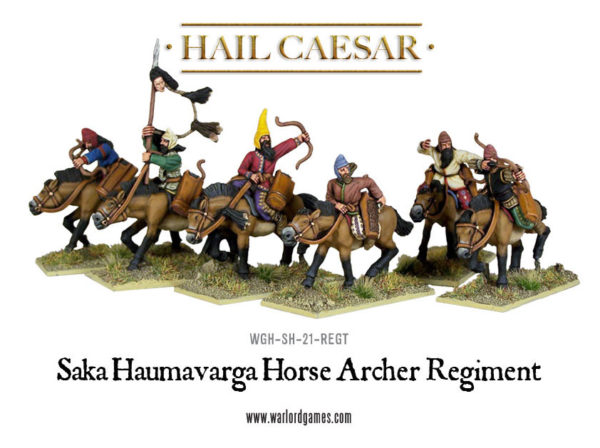
Uniforms
The colour pallet available for dying cloth was somewhat limited during the ancient era. Colours like purple came from snails and were very expensive. White and grey were base colours from cotton and wool; while light yellow came from linen. Colours available from dyes included: woad – blue, indigo – blue, saffron – ochre (bright yellow was expensive) and madder red. Obviously you could mix these to get shades like green. A popular colour of the Persian army seems to have been brown.
An officer is depicted wearing a white robe, over which is a scale cuirass. He has blue trousers and cape. His sash is red as the others and has mede style hat. According to inscriptions we know that Cyrus gave his commanders a Median cloak of purple, brown, crimson and red. They in-turn, were supposed to pass some of these down the line of command to subordinate commanders. There is an indication that goods passed from a superior to a subordinate were how units were equipped, and established the largess of the leaders. In some cases this might originate in cash payments to buy equipment or in the direct presentation of equipment.
Reliefs at Susa and Persepolis show various troop types. The guards are shown in glazed bricks, in colour. They are dressed in Elamite robes, tiaras, spears and bows in bow cases. Two immortals are based on the Susa reliefs. The basic long robe is in white. The central section and lower sleeves were yellow. The robes have a black applique design. The sash was light blue. The other figure had a grey basic color with a green band and white median flower design. The sash was yellow. He has a figure eight shield with brass fittings. Immortals wore turbans of yellow dyed. Persian commanders wore a muslin rag around their heads. Immortals wore applique badges – one shows an eight ray disk, the other a triple fire altar. The shoes were made of yellow leather.
A standard bearer is based on pottery of the Persian War period. He wears a tunic over a white shirt. The tunic and trousers have a base colour of ochre with stripes of brown and red. The sash is red. He wears a leopard head as a hat.
An Archer is based in the palace reliefs wearing felt round hat, beige/brown tunic and trousers. He has a red sash around his middle with bow-case on the right side. Line units seem to have been a mixture of colorfully dye or embroidered cloth and single colour garments in untreated fabric.
Other units wore regional dress. Ethiopians had horse-scalp headgear and cotton loincloth. Nubians colored their bodies red and white. Theban hoplites fought in traditional hoplite panoply. Indians wore cotton dhoti. Thracians wore fox skin hats, javelins and peltast shields. Assyrians wore linen corset. Sakae infantry wore stripes with geometric pattern. There were about 20 other units and nationalities described in Herodotus – many in brightly coloured robes, cloaks, pants and shirts. For the most part these seem to have been in geometric patterns or striped and could have been woven cloth in dye wools and cotton.
Doctrines
Cavalry could roll up flanks and hit disorganised troops, but could not survive an assault on hoplites in formation. Infantry’s normal doctrine was to set up shields and fire arrows from behind this. The first rank would have spears at the ready. Missiles would soften up the enemy, and then the infantry would move on them.
Current thinking says that the main Persian battle line was made up of the Sparabara infantry. The Sparabara was large shields similar to a medieval pavise which was set up in a static battle line. Behind this was a spearman with a short stabbing spear to protect the battle line. Behind this first line were archers who might also be armed with falchions. Lighter-armed missile troops would operate on the flanks. Cavalry and light infantry would maneouvre to attack the enemy with missiles. This would go a bit against the histories which describe Persian infantry engaging hoplites – usually unsuccessfully on the battlefield which would indicate that at least some infantry units were equipped with smaller more mobile shields.

